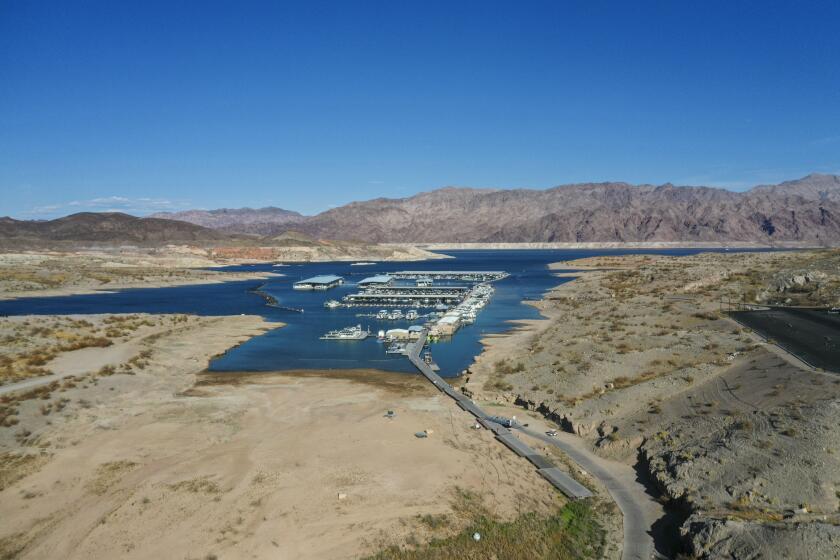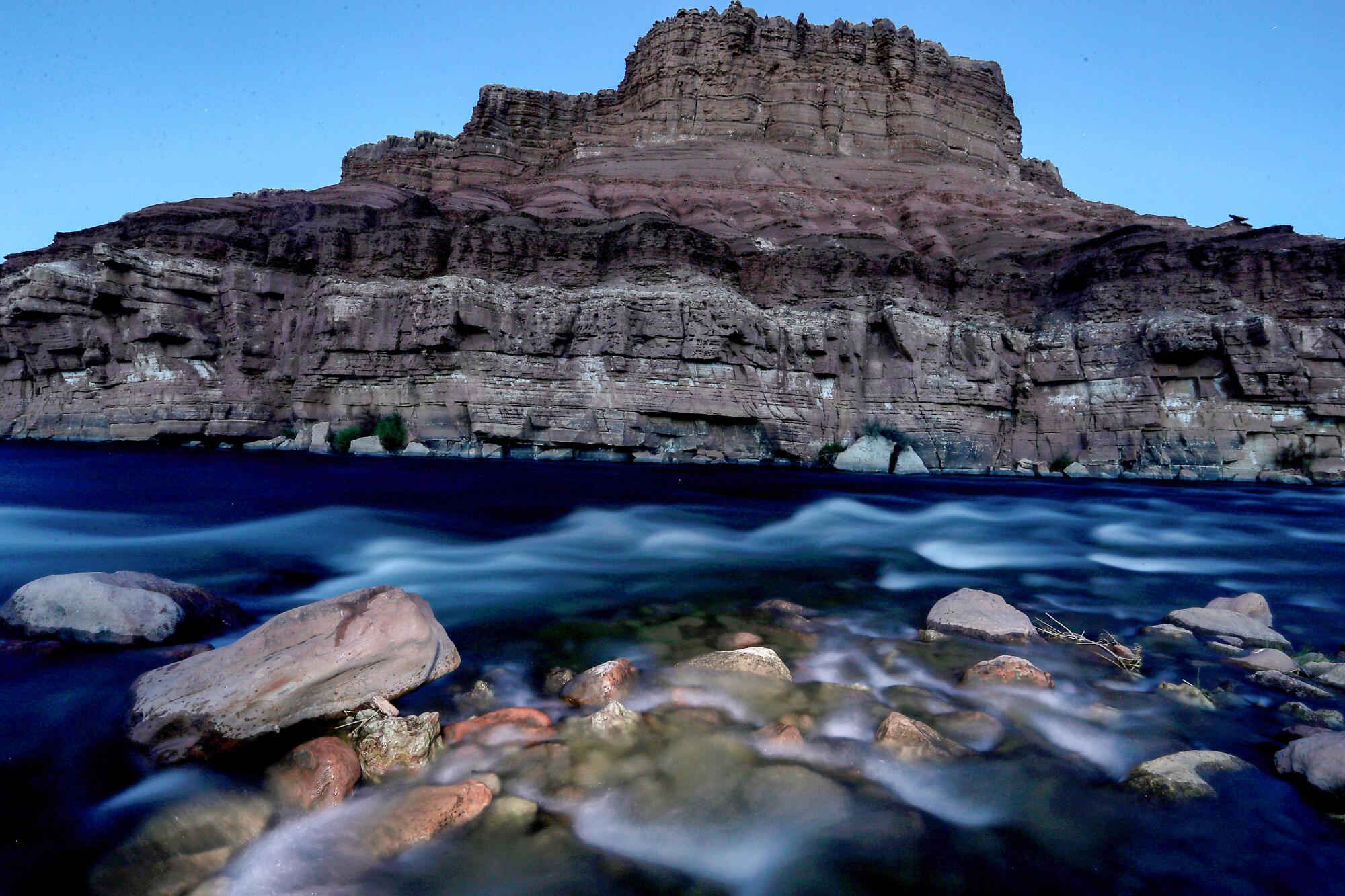
- Share via
LAS VEGAS — When officials from California, Arizona and Nevada signed a deal this month to take less water from the shrinking Colorado River, a large portion of the water savings came through agreements with two Native tribes.
Indigenous leaders have also been invited by the Biden administration to play a key role in future negotiations on coping with shortages.
The rising involvement of tribes in discussions about managing the West’s scarce water supplies marks a dramatic turn in a century-long history of being left on the sidelines.
“We see ourselves as really a leader in this,” said Stephen Roe Lewis, governor of the Gila River Indian Community, whose reservation lies south of Phoenix. “This is part of our value system to conserve water when we can. And we see this even as a moral obligation.”
Lewis is part of a growing movement pushing for Native communities to have a bigger say in decisions about the river, which sustains cities and farms across the West but faces chronic overuse and diminishing snowpack in its headwaters in the Rocky Mountains.
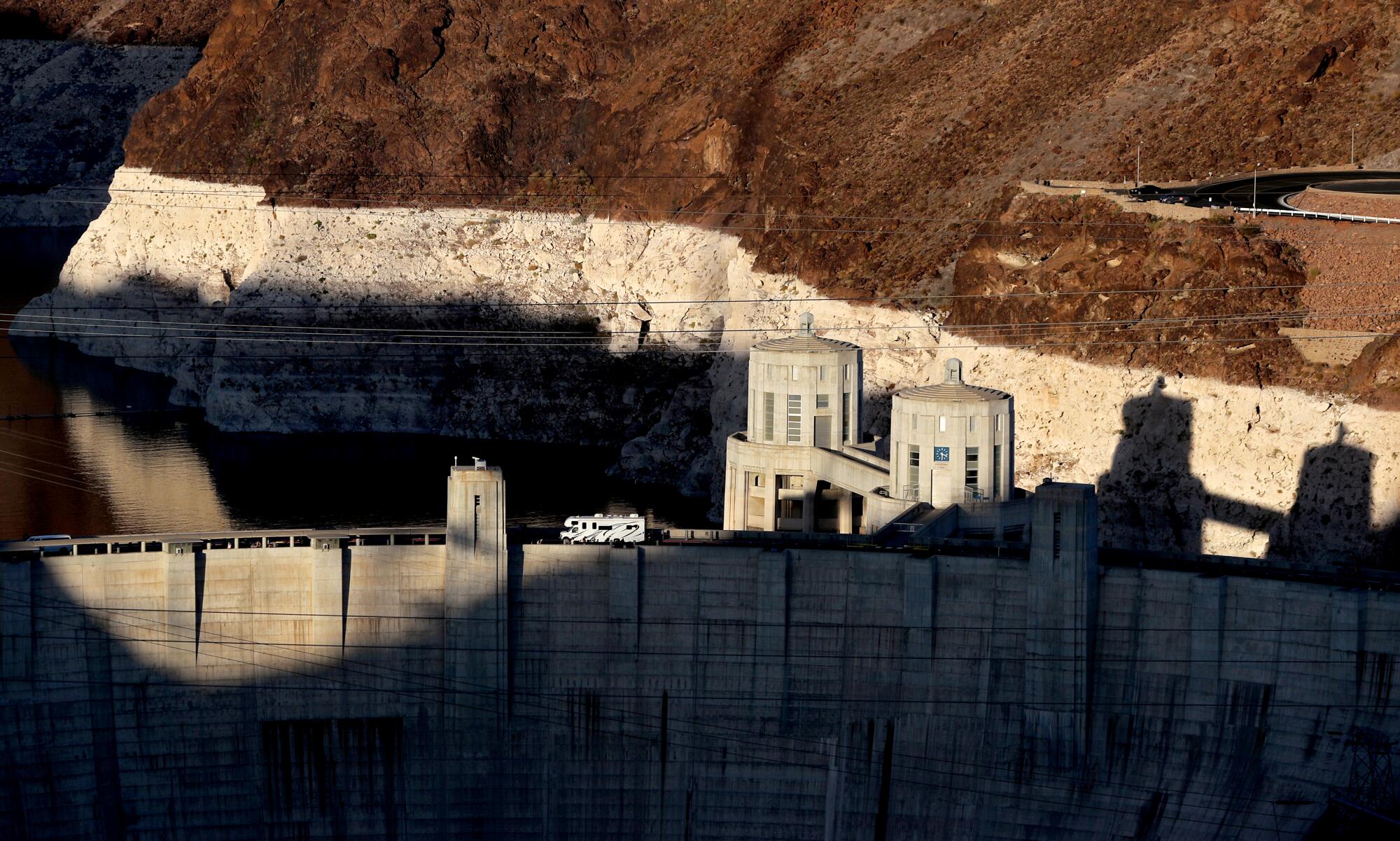
He was one of 20 tribal leaders from across the Colorado River Basin who signed a joint letter to Interior Secretary Deb Haaland last month saying tribes have an “essential role” to play in upcoming negotiations for dealing with shortages after 2026, when the current rules expire.
They told Haaland, the country’s first Indigenous cabinet secretary, that they must be at the table alongside the seven states that rely on the river.
“Basin Tribes hold water rights to approximately 3 million acre-feet of Colorado River water, which equates to about 25% of the river’s current average annual flow,” their letter explained. “This percentage will only increase as climate change continues to diminish overall runoff amounts and reduces the amount of water available to lower priority users.”
There are 29 federally recognized tribes in the Colorado River Basin. Some have unsettled water rights claims and serious water infrastructure deficiencies. On the Navajo Nation, for example, an estimated 30% or more of people live in homes without running water.
With Lake Mead continuing to decline, California, Arizona and Nevada agreed to further cut their use of Colorado River water.
Other tribes have secured water rights settlements but have as yet been unable to fully develop and use their rights to Colorado River water.
The tribal leaders told the federal government that the next round of rules must “recognize and include support” for access to clean water and tribal water rights settlements as well as allow tribes to market their water outside their reservations and be compensated for dedicating unused water to boost reservoirs.
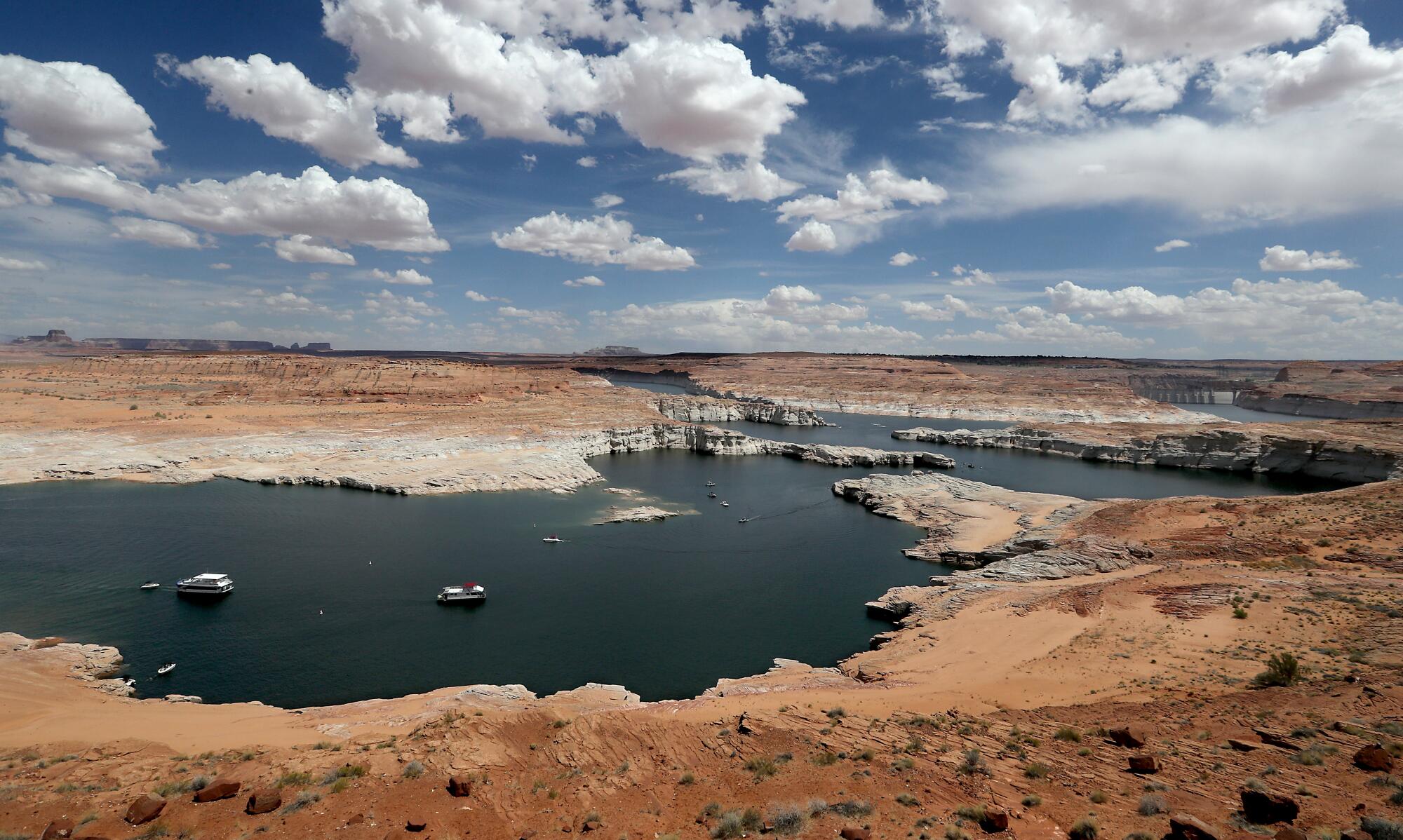
Haaland responded in a letter to the tribes, saying she is “committed to bringing Tribal voices and Tribal perspectives to everyday decisions” by the federal government, including decisions about managing water.
Haaland said she will hold a “listening session” in early 2022 to hear from tribes in the Colorado River Basin.
Lewis said the response from the federal government represents a “night and day” shift from the past: “It’s such a dramatic change for tribes to be at the table in a very meaningful way.”
Daryl Vigil, water administrator for the Jicarilla Apache Nation in New Mexico, noted that the 1922 Colorado River Compact, which established the system of allocating water from the river, didn’t apply to tribes.
And when the latest guidelines for managing the river were negotiated in 2007, tribes weren’t included either.
“I think with the promises that this administration has made, and the appointments that they’ve made, absolutely stars are aligning in terms of our ability to actually forge something and transform the basin,” said Vigil.
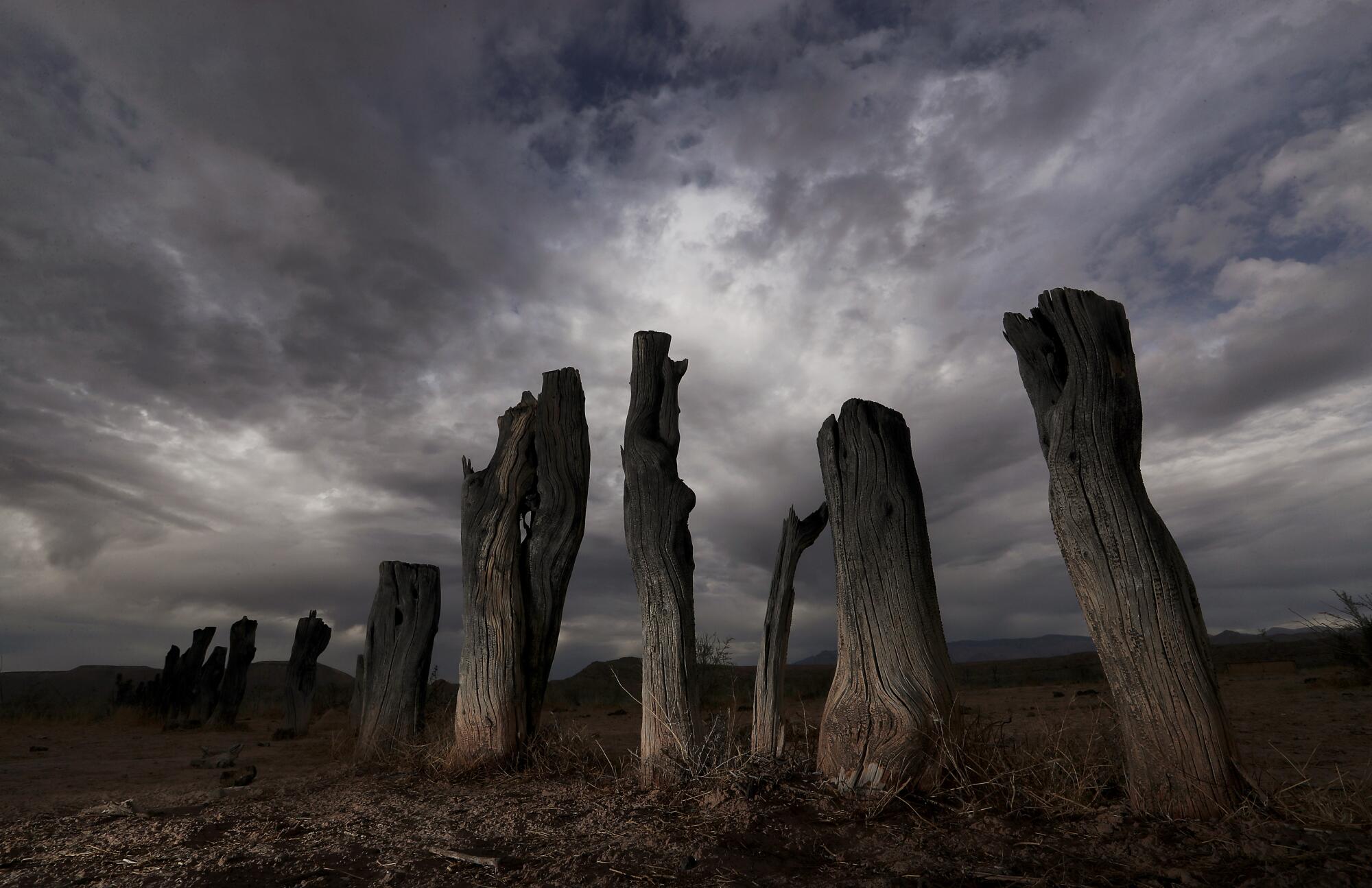
Under the water-saving agreement signed this month, the Gila River Indian Community and the Colorado River Indian Tribes will together conserve about 134,000 acre-feet of water next year — more than a quarter of the 500,000 acre-feet that the three states have pledged to leave in Lake Mead.
The Gila River community will receive about $30 million for its portion of the water next year. The community plans to leave some reservation farmland dry and fallow and to contribute water that would otherwise have been stored or put on the market in Arizona.
Lewis signed the agreement alongside Chairwoman Amelia Flores of the Colorado River Indian Tribes, whose reservation straddles the river in Arizona and California.
“The Colorado River has sustained us for many, many generations,” Flores said during the signing ceremony. “It is time for all of us to help save this river.”
The two tribes made a similar deal in 2019 as part of Arizona’s piece of a drought plan. When that agreement was sealed in a ceremony on a terrace overlooking Hoover Dam, representatives of the seven states did the signing.
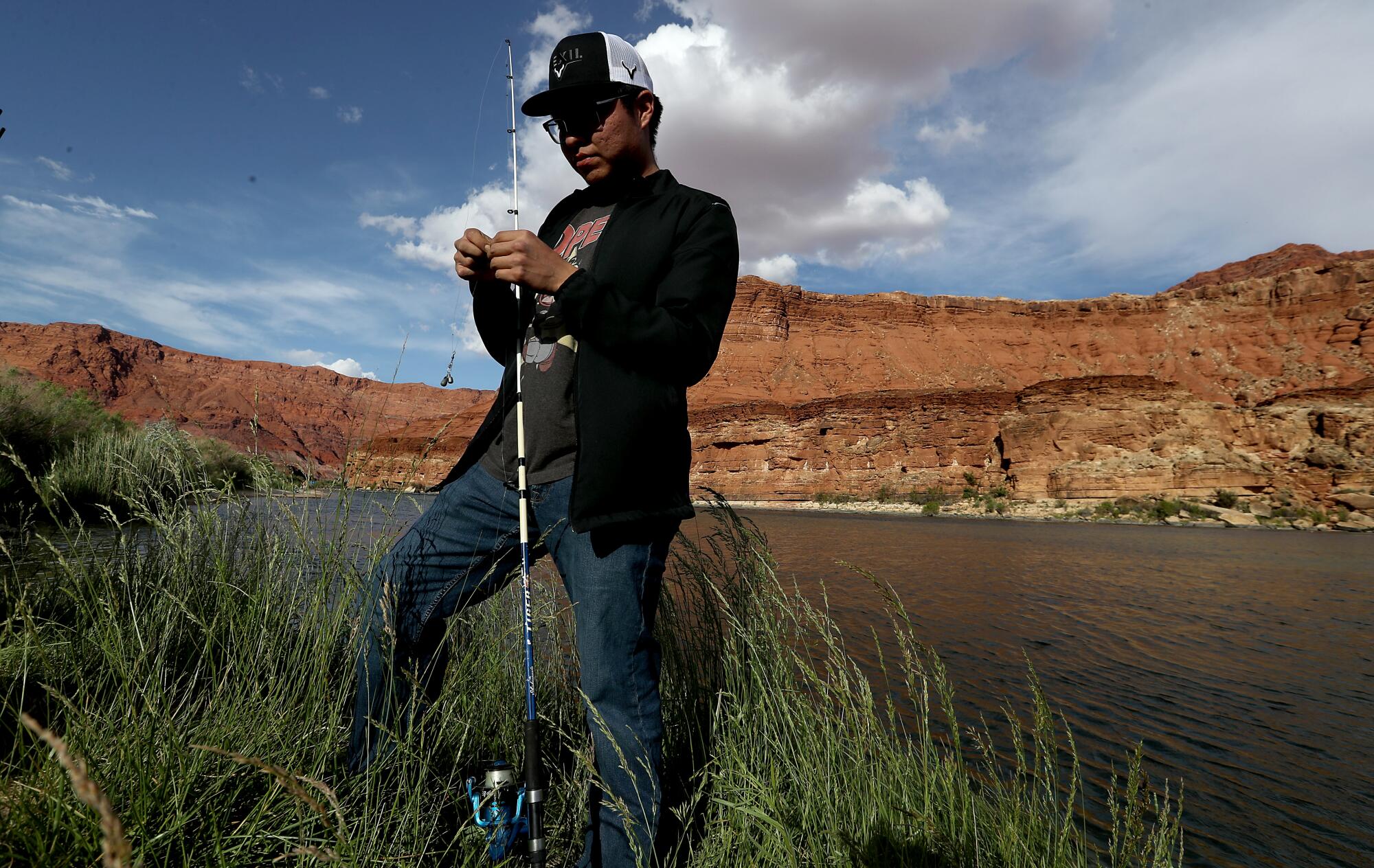
This time, the Indigenous leaders signed their agreements beside Assistant Interior Secretary Tanya Trujillo, who pledged “more and better coordination” with tribes.
Robert Glennon, a water researcher and law professor at the University of Arizona, said it was historic and “very moving to see the tribes represented in such a visible way on the stage, because that’s new.”
“Historically tribes weren’t in the room — never mind at the table and never mind driving the agenda,” Glennon said. And now, he said, “without the tribes, there’s no deal.”
The Colorado River has long been over-allocated, with more water diverted to farms and cities than the river’s flows can sustain. The river’s reservoirs have declined dramatically during a 22-year dry stretch, which research shows has been worsened by global warming.
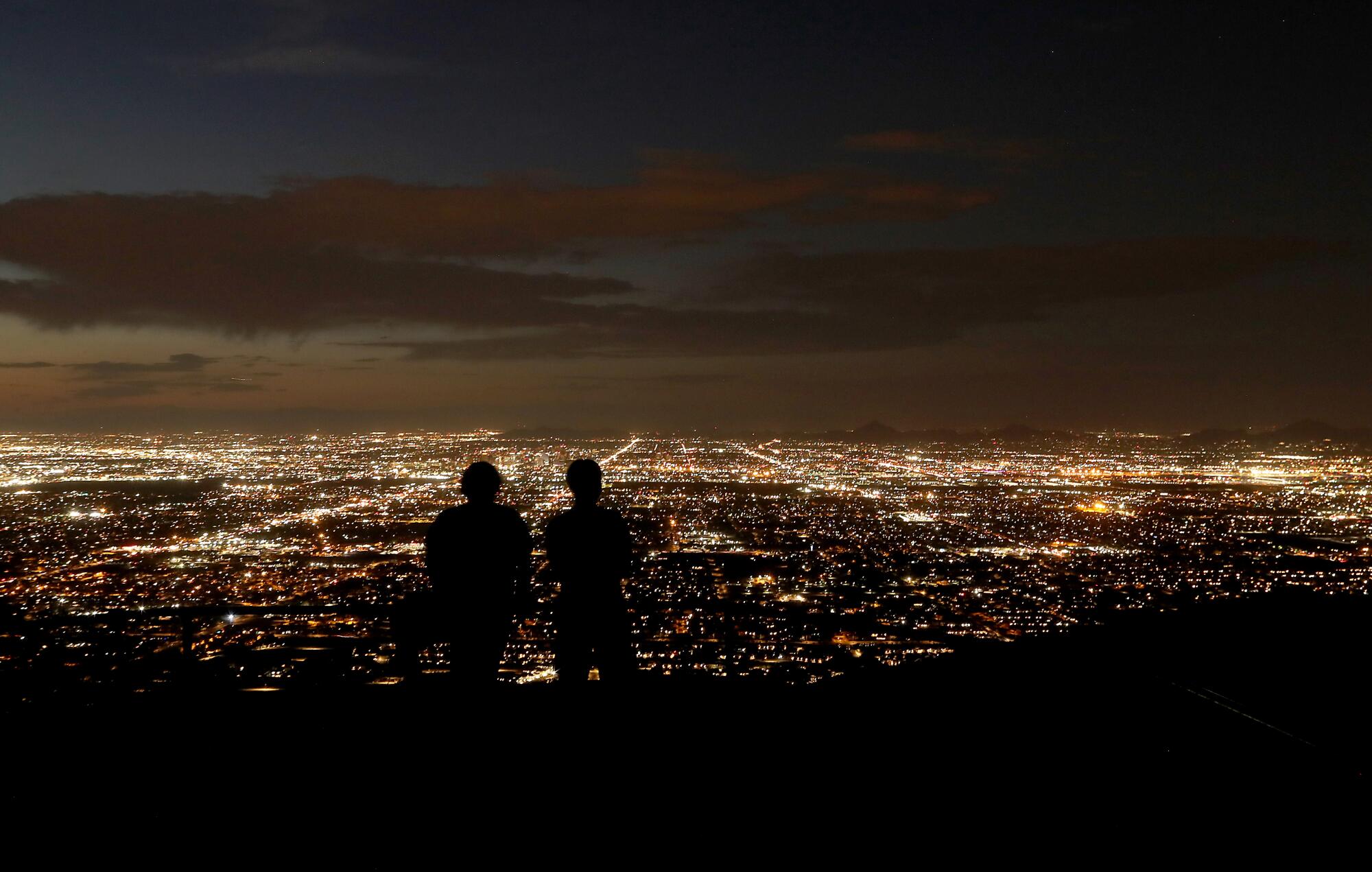
Tribal leaders say more needs to be done to rectify the long-term injustices faced by Native communities that lack water access for homes and farms.
Speaking on a recent panel of Native community leaders, Forrest Cuch, an elder in the Ute Indian tribe, said that the Uinta River in Utah has gone from once being an active tributary of the Colorado to now barely flowing.
“In the Uinta Basin we have farmers plowing up lands that are not fit for production,” said Cuch, a former director of the Utah Division of Indian Affairs.
He described the story of the Colorado River as one of “exploitation, extraction and development at all costs.”
More to Read
Sign up for Essential California
The most important California stories and recommendations in your inbox every morning.
You may occasionally receive promotional content from the Los Angeles Times.
